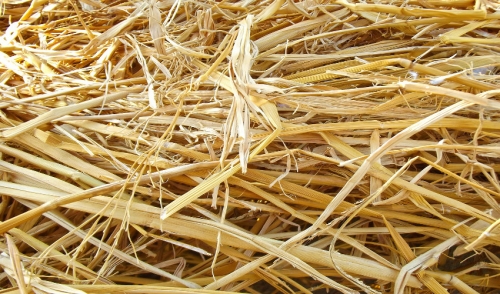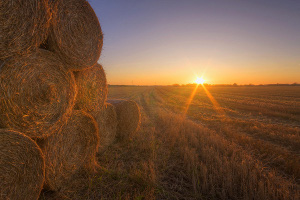{article.name}
Stay Informed
Five Factors of Hay Quality

- Share this:
- Share on Facebook
- Pin on Pinterest
- Tweet on Twitter
To most individuals passing through rural areas, hay seems simple. Its dry, tough, and it feeds livestock. However there’s more to hay than meets the eye. Hay is one of those grasses where it is particularly hard to see the quality and composition. The best way to truly know the quality of hay you are using is to test it. Essentially, hay quality is affected by five major factors; stages of maturity, leafiness, color, foreign matter, and odor and condition.
Out of all of these factors, the stages of maturity are the most important. The growth stage of the hay plays a huge role in the quality of hay you feed your livestock. It’s a simple concept, the younger the better. As these grasses and legumes progress from vegetative to reproductive stages, the yield continues to increase, but the quality decreases. Therefore, always keep in mind quality over quantity. Yes you can get more hay for your dollar, but even though it looks the same it’s still lower quality. Why is this important? Finding the right yield in combination with the right quality will produce the best animal performance for your livestock. This is also means that the hay should be harvested before it fully matures. Once the hay matures, the forage loses its quality leaving you with stems, straw, and feed that’s not as good for your farm. The second factor is leafiness. The more leaves in the hay the better. The maximum nutrient profile can be achieved by harvesting when the leaves start to appear. This give you the optimum nutrient profile for a great combination of hay with protein content, digestibility, and fiber content. Leaves contain all the ‘juice’ for providing your livestock with a great source of protein. The goal is to harvest it with as many leaves and as few stems as possible.
Even though color is not best factor for determining hay quality, it tells us a lot about the curing process of the hay. If your hay is bright greenish, then it was cut at the optimal stage of maturity. If your hay is yellow in color, it’s still ok. The yellow color is just a result of sun bleaching and has no effect on the quality of your hay. Hay that resembles a brown color is hay that has been exposed to too much moisture during its curing process. This also indicates some degree of fermentation. If your hay is any darker than brown or almost black in color, then during its curing process, the hay was exposed to rain and high levels of humidity. This hay is poor quality and is usually accompanied by a bad odor. In general slight discolorations from yellow to green are acceptable, but anything darker means rain damage or the hay has been exposed to excessive heat and fermentation leaving you with a low quality product. The last two factors are foreign matter and odor/condition. The highest quality hay is free of foreign materials such as dirt and wire, as well as free of deterioration from harvesting and storage. Foreign matter may seem irrelevant, but there are many antiquality factors that can discourage animal consumption such as thorns, bitter tastes, and pesticides. Finally, smell  your hay. Good hay will smell as good as a freshly mowed lawn. If your hay smells like mildew or
your hay. Good hay will smell as good as a freshly mowed lawn. If your hay smells like mildew or
other rotten odors, it’s a reflection of poor quality and harvesting practices. You want the hay to smell fresh and to feel soft and pliable for your livestock.
High quality hay is important for the life and performance of your horses and livestock. Feeding your livestock low quality hay is like feeding your child fast food before a soccer game. Just like humans, your animals are what they eat. Make sure to use hay that was harvested at the right stage of maturity so you get balanced forage full of leaves and nutrients.
Special Offers
We are constantly adding new specials to our site. Be sure to check back often!


Comments